An alternative method consists in finding all children nodes from the given node n.
We can use the rpart object to find those. Combining this information with the
end node for each point in the dataset (kyphosis, in this question),
obtained from fit$where as explained
@rawar, you can get all points in the dataset involved in given node, not
necessarily an end one.
A summary of the steps are:
- Find node numbers and identify those that are end nodes ("leaf"). This
information can be found in the
frame element of the rpart object.
- Compute all children nodes of the given node
n. They can be computed
recursively using the fact that the children of node n are 2*n and
2*n+1, as explained in the rpart.plot package
vignette page 26
- Once the leaves hanging from the node
n are known, pick the points in the
dataset in those leaves using the where element of the rpart object
I coded steps 1 and 2 in function get_children_nodes() and step 3 in function
get_node_data() that answers the question posed. In this function, i've
included the possibility to print the corresponding node rule (rule = TRUE) to
get the same answer than @datamineR
library(rpart)
library(rpart.plot)
fit <- rpart(Kyphosis ~ Age + Start, data = kyphosis)
get_children_nodes <- function(tree, node){
# check if node is a leaf based in rpart object (tree) information (step 1)
z <- tree$frame
is_leaf <- z$var == "<leaf>"
nodes <- as.integer(row.names(z))
# find recursively all children nodes (step 2)
find_children <- function(node, nodes, is_leaf){
condition <- is_leaf[nodes == node]
if (condition) {
# If node is leaf, return it
v1 <- node
} else {
# If node is not leaf, search children leaf recursively
v1 <- c(find_children(2 * node, nodes, is_leaf),
find_children(2 * node + 1, nodes, is_leaf))
}
return(v1)
}
return(find_children(node, nodes, is_leaf))
}
get_node_data <- function(dataset, tree, node, rule = FALSE) {
# Find children nodes of the node
children_nodes <- get_children_nodes(tree, node)
# match those nodes into the rpart node identification
id_nodes <- which(as.integer(row.names(tree$frame)) %in% children_nodes)
# Get the elements in the datset involved in the node (step 3)
filtered_dataset <- dataset[tree$where %in% id_nodes, ]
# print the node rule if needed
if(rule) {
rpart::path.rpart(tree, node, pretty = TRUE)
cat(" \n")
}
return( filtered_dataset)
}
# Get the children nodes
get_children_nodes(fit, 5)
#> [1] 10 22 23
# Complete function to return the elements of node 5
get_node_data(kyphosis, fit, 5, rule = TRUE)
#>
#> node number: 5
#> root
#> Start>=8.5
#> Start< 14.5
#>
#> Kyphosis Age Number Start
#> 2 absent 158 3 14
#> 10 present 59 6 12
#> 11 present 82 5 14
#> 14 absent 1 4 12
#> 18 absent 175 5 13
#> 20 absent 27 4 9
#> 23 present 96 3 12
#> 26 absent 9 5 13
#> 28 absent 100 3 14
#> 32 absent 125 2 11
#> 33 absent 130 5 13
#> 35 absent 140 5 11
#> 37 absent 1 3 9
#> 39 absent 20 6 9
#> 40 present 91 5 12
#> 42 absent 35 3 13
#> 46 present 139 3 10
#> 48 absent 131 5 13
#> 50 absent 177 2 14
#> 51 absent 68 5 10
#> 57 absent 2 3 13
#> 59 absent 51 7 9
#> 60 absent 102 3 13
#> 66 absent 17 4 10
#> 68 absent 159 4 13
#> 69 absent 18 4 11
#> 71 absent 158 5 14
#> 72 absent 127 4 12
#> 74 absent 206 4 10
#> 77 present 157 3 13
#> 78 absent 26 7 13
#> 79 absent 120 2 13
#> 81 absent 36 4 13
Created on 2023-08-14 with reprex v2.0.2

